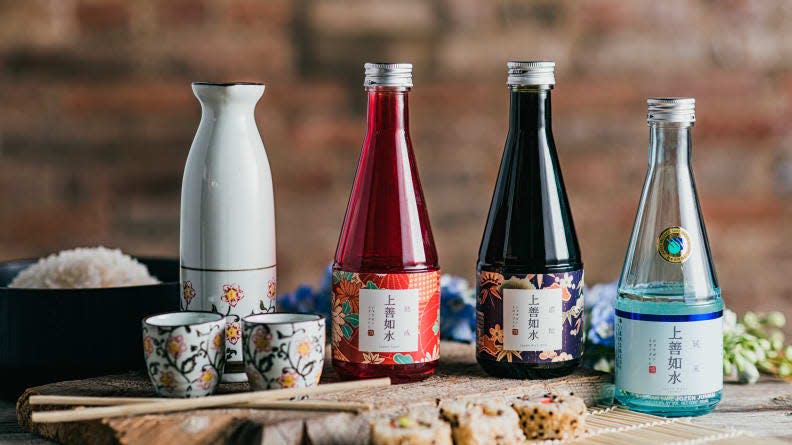What is sake? What the Japanese drink is made of and how to drink it right.
In the summer of 2022, Japan launched a business contest to get young people to drink more booze, combatting a declining alcohol industry. The Sake Viva! contest is organized by Japan’s official National Tax Agency and encourages people ages 20 to 39 to submit business plans.
According to the tax agency, Japan’s alcohol sales are on the decline because of falling birthrates, aging populations and COVID-19-related lifestyle changes.
The result? Japan wants its younger adult population to start drinking more sake, shochu, awamori, beer, whisky, wine and liqueur.
But what exactly is sake? Read on to discover more about the traditional Japanese alcohol.

What is sake?
Sake is a Japanese alcoholic beverage made from fermented rice. According to the National Research Institute of Brewing in Japan, it is believed rice-based alcohol was made as early as the Yayoi period from 300 B.C to A.D. 250. Sake breweries appeared between 1333-1573.
There are many different types of sake, but they generally are categorized by the five main types of sake, according to Sake World:
Junmai-shu: Made of rice only, no distilled alcohol is added.
Honjozo-shu: A little distilled alcohol is added
Ginjo-shu: Highly milled rice that sometimes has alcohol added and sometimes doesn’t
Daiginjo-shu: Even more highly milled rice
Nama-zake: Not pasteurized
There is also cloudy sake, which is coarsely filtered; sparkling sake, which contains lower alcohol and is often served chilled; and long-aged sake, which has a mellow taste.
How long is alcohol in your system? That depends on several factors
What does sake taste like?
According to NRIB, sake can range from dry to sweet and is more acidic than beer. The drink’s amino acids account for an umami flavor, and some sake types even have fruity flavors.
How is sake made?
Like wine and beer, sake is made through the fermentation of yeast. This fermentation process uses fine polished white rice, like grapes for wine or grain for beer. After the rice has been polished, it soaks in water and is then steamed.
Koji mold, the national fungi of Japan, is used for making sake. Koji, steamed rice, water and a fermentation starter are combined. According to NRIB, koji enzymes convert the starch in the rice to sugar, and the fermentation mash becomes liquified. The mash is then pressed, separated out into “sake kasu,” or sake cakes, pasteurized and bottled.
Is sake stronger than vodka?
Sake is not stronger than vodka. Sake contains about 15-16% alcohol by volume, while vodka contains 40% ABV. In comparison, beer is generally 5% and wine 15% ABV, SAKETIMES writes.
How to drink sake
It’s customary to serve your friends, and have your friends serve you when drinking sake. Sake is often toasted, known as “kanpai,” roughly translating to “drink your cup dry,” SAKETIMES says.
Sake cups are called ochoko, and sake pitchers are called tokkuri. For cold sake, use a smaller cup made of porcelain, metal or glass. For warm sake drinkers, Tsunagu Japan recommends using porcelain or ceramic.
Sake can be chilled in the fridge. Hot sake is made by placing a tokkuri in boiled water for a few minutes.
What is mirin?: What you need to know about the Japanese rice wine
Just Curious for more? We've got you covered
USA TODAY is exploring the questions you and others ask every day. From "How long to grill chicken breast" to "What can I give my dog for pain?" to "Is alcohol a drug?", we're striving to find answers to the most common questions you ask every day. Head to our Just Curious section to see what else we can answer for you.
This article originally appeared on USA TODAY: What is sake? Facts, history and how the Japanese drink is made.

